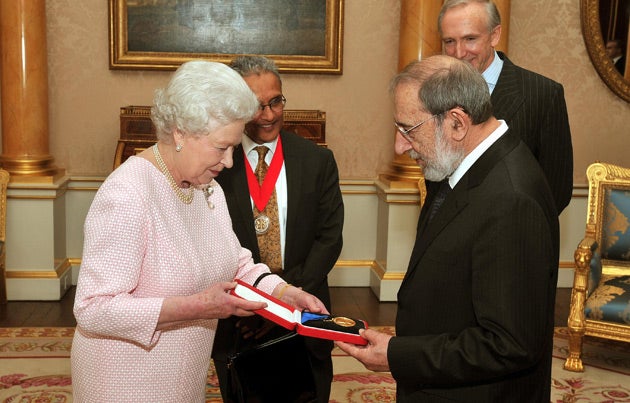Alvaro Siza: Gold medal for architecture
The Queen has awarded the 76-year-old Portuguese architect a Riba gold medal – and rightly so, says Jay Merrick

Alvaro Siza, one of the world's handful of true architectural geniuses, has just received the coveted Riba Royal Gold Medal from the Queen. This for a man whose only work in Britain was the 2005 Serpentine Gallery Pavilion. So, who is this mysterious 76-year-old Portuguese designer? And why is he regarded as a deity by many of the most thoughtful of Britain's architectural new wave?
"Siza is an anomaly," says Patrick Lynch, the 2005 Young Architect of the Year. "He's an erudite builder whose attention to the details of a situation is twinned with a wild imagination. He absorbs phenomena and regurgitates them, transformed, like a seer or shaman. He's the closest we have today to Le Corbusier, or Louis Kahn, or Alvar Aalto – part-wise baby, part-wise priest."
I once encountered Siza in the Porto studio of his collaborator, Eduardo Souto de Moura. While Siza answered questions about his design for the Serpentine Gallery Pavilion, I noticed he was surreptitiously sketching Julia Peyton-Jones – the gallery's director – on a scrap of paper. Then the magus revealed himself. Describing the roof of the pavilion as "like the hairs of an animal," he murmured that his main idea had been "to give a feeling of vibration, of movement, giving the building a kind of aura of light".
It is this kind of revelation that prompts Lynch to describe Siza as "more like a poet than a technician, since he deals with what Aristotle called mimesis. This means not simply copying nature or, as is too often the case today, producing architecture that's a biological or mechanical take on nature. Like Aristotle's image of a poet, Siza transforms the world for us, re-presenting common situations as something magical".
It is a magic that is never experienced in an obvious way . To visit Siza's buildings is to be caught in unusual gravities of form, space and light. On one level, the architecture recalls architectural precedent – a glimpse of Corb here, or of Adolf Loos there. Isn't there something familiar about the graceful manipulations of form at the Serralves Museum in Porto?
But Siza's architecture triggers a more important kind of memory – a subtly charged confrontation between human beings and his architecture. He describes this tension: "Each of my designs seeks to capture with the utmost rigour a simple concrete moment of a fleeting image."
The compelling ambiguity that defines Siza's architecture is clearly modernist, but it wants nothing to do with modernism's systems, certainties and superficial virtuosities.
Referring to one of Siza's early works, a house in Santo Tirso with a peculiarly fractured floor-plan, the Spanish architect Jose Rafael Moneo nails the mysterious quality of Siza's work when he talks of "spaces that exude intimacy, a density of feelings".
His quest for "the magical strangeness of ordinary things" was there at the start of his career, as was his ability to create new ways of moving around buildings. More than three decades ago, his Banco Pinto & Sotto Mayor in Oliveira de Azemeis generated fragmented asymmetries of horizontal plan and vertical section that are mind-blowing.
And of human interest, as this coda from Alun Jones, another of British architecture's brightest young hopes, reveals: "I met Siza in 2001 when in Porto with a colleague," he recalls. "We went to his office, uninvited, and found ourselves face to face with the great man, a Havana in one hand, a wedge of sketches in the other. We chatted for a while and he suggested lunch. Then he remembered he'd left the Brazilian foreign minister in the conference room. He apologised, leaving us to be shown the studio by an assistant. The analogy here is that Siza makes time for you, irrespective of who you are, and his architecture does the same."
Join our commenting forum
Join thought-provoking conversations, follow other Independent readers and see their replies
Comments
Bookmark popover
Removed from bookmarks